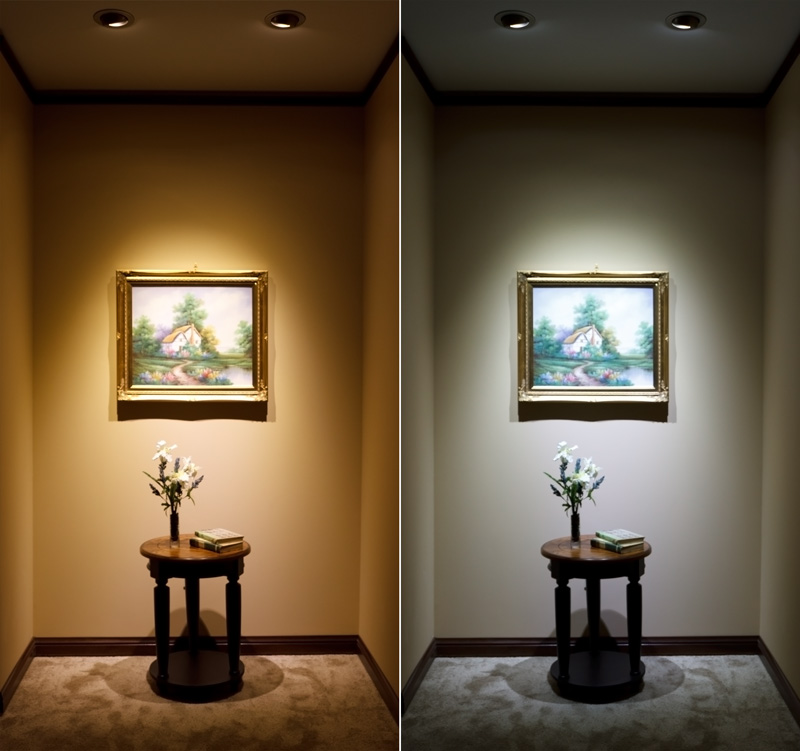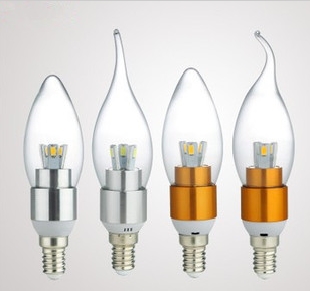Fluorescent lighting contains toxic materials such as mercury which is harmful to environment and human body
LED lighting is truly the next generation technology which features numerous benefits to not only consumers for Home LED Lighting, but businesses alike, with
LED Downlight products and LED Tubes which can replace out-dated, buzzing fluorescent lighting. LED lighting offers such benefits as a higher energy efficiency than CFLs and fluorescents, lower power consumption, lower maintenance costs, longer lifetime (50,000 hours compared to less than 10,000), durability and brighter light output than conventional fluorescent lighting. LED lighting is slowly filling the Home Lighting and Business Lighting market place with such innovative products as
LED T5 and LED T8 Tubes, Flexible LED Lighting, and LED Down Lighting.
Fluorescent lighting contains toxic materials such as mercury which is harmful to environment and human body. Did you know that if you drop or break a fluorescent bulb you must leave the room for 4 hours, due to the toxic materials floating in the air, which could cause respiratory damage, or Asthma in the long run for workers who have to deal with these fixtures daily. For workers and personnel who replace fluorescent tubes at work such as electricians are the most impressed by LED tubes, since they are not only easier to install, requiring no ballast, but they are worry-free, as they can last upwards of 10 years, on for 24 hours a day, and do not contain any toxic materials like mercury dust that fluorescents do. For quick installation, LED tube lighting can be placed and installed directly into existing fluorescent T5 and T8 sized sockets, you only need to remove the ballast, plug the LED bulbs in, and you're done! Contrary to popular belief, LEDs are very easy to install in this day and age, and the bulk of LED products are now "plug-and-play" while still offering a slick look with unmatched energy savings.
Although fluorescent lighting is more energy efficient than incandescent lighting, it is still an energy wasting monster when compared with LED lighting. For businesses who have a large electric bill, switching to LEDs could cut your energy bill in half, while still keeping all of the brightness, and no fluorescent flickering! Even with the most advanced state of the art CFLs, fluorescent lighting accounts for a high percentage in existing lighting all over the world, switching from
fluorescent lighting into LED lighting can greatly reduce the global lighting power consumption and greenhouse gas emissions. Now let's do some detailed analysis to compare LED and fluorescent lighting, and there is no doubt that LED will defeat fluorescent lighting.
First of all, LED lighting is more energy efficient than fluorescent lighting due to the high efficacy of LEDs. LEDs for interior lighting have already broken the efficacy record of 100 lumen per watt, while fluorescent lighting only has an efficacy of around 60 lumen per watt. LED has a power factor of 0.9, which means most of the power is converted into light, but when fluorescent lighting works, a huge amount of power is converted into heat which will be dispersed finally. LED lighting consumes only 30% energy as fluorescent lighting to deliver the same lumen output.
Secondly, Flexible LED lighting has a much longer lifetime than fluorescent lighting since LED lighting is solid state lighting which more stable and reliable. LEDs can last over 50,000 hours which means 17 years under normal use. Whereas fluorescent lighting only has a lifetime of around 5,000 hours, which means you have to replace them as often. Using LED lighting can greatly save your expenses which are used to buy new light bulbs and pay for the labor.
In addition, the light quality of LED down lighting is much better than that of fluorescent lighting. Fluorescent lighting is always flickering when start up, while LED lighting is quick to start up without any flickering. We all know and have seen or live with flickering fluorescent tubes on a daily basis. They've actually been proven to cause headaches, due to the micro-pulse wavelength they emit. Using LEDs can reduce workplace strain, headaches, and increase efficiency, with workers at top performance, minus the migraines from CFLs!
When on for hours a day, for a long period of time, fluorescent lighting may have some hot spots due to heat it generates, which does not happen to LED lighting. These hotspots cause the rest of the light to become dimmer, and quickly results in a dead CFL tube, a perfect reason to switch to LED T8 Tubes or T5 tubes, depending on the socket size. Fluorescent lighting / CFL pigtails can cause eyestrain, but LED lighting does not as a result of its uniform and unparalleled balanced light output, and does not flicker or emit a low pitched humming like the earlier fluorescent technology. Today, Flexible LED Lighting, Home LEDs, and Downlighs / LED Tubes are more eco-friendly than ever, beating fluorescent lighting by upwards of 500% - Translation: Savings on your energy bill for both your home and office lighting fixtures. And of course, Fluorescent lighting contains toxic materials such as mercury which can cause air pollution if broken, and when thrown out and can cause permanent damage to the lungs and throat / skin if contact is frequent, or daily.
In contrast, LED lighting is solid state lighting which does not contain any filaments that could break (like incandescent) or hazardous materials like CFLs. Someone may say that the upfront costs of LED lighting is too high, due to the technology used to achieve such a high lumens per watt (efficacy) rating, it is true. However, think about the long term energy savings, and savings you will get from not needing to replace the lights, for up to 5 or 10 times as long, depending if the light replaced was incandescent or fluorescent. Either way, the more high energy halogen, incandescent, or fluorescent lights you replace, the more money you will save every month. Some towns and states even have a tax-rebate / government program that pays you / reimburses you for energy saving LED bulbs. Check with your local town, half the bill could be on them due to recent energy grants and programs setup by President Obama in early 2010. Over the full life of the LED fixture / tube or bulb, the money saved by using LED lighting will be enormous? Why's that? When factoring in the true price of lighting, you must include all 3 variables: Upfront costs, maintenance costs, and a maintenance main to routinely replace your lights.. that is of course, if you aren't using LEDs!
In my opinion, LED lighting will replace fluorescent lighting since it meets the requirements of sustainable development, incandescent lighting, due to energy savings and durability, and halogen lighting due to the heat, safety factor, and of course energy usage! Replace your money hungry lights at the home, office, hotel, casino, college, dorm, or even your RV to save battery power! Go green and truly be eco-friendly with LED lighting, and don't forget to PROPERLY dispose of CFL lights in a sealed garbage bag (or two, or your garbage mans health).



/cdn0.vox-cdn.com/uploads/chorus_asset/file/3688564/LSPX-100E26J.0.jpg)




